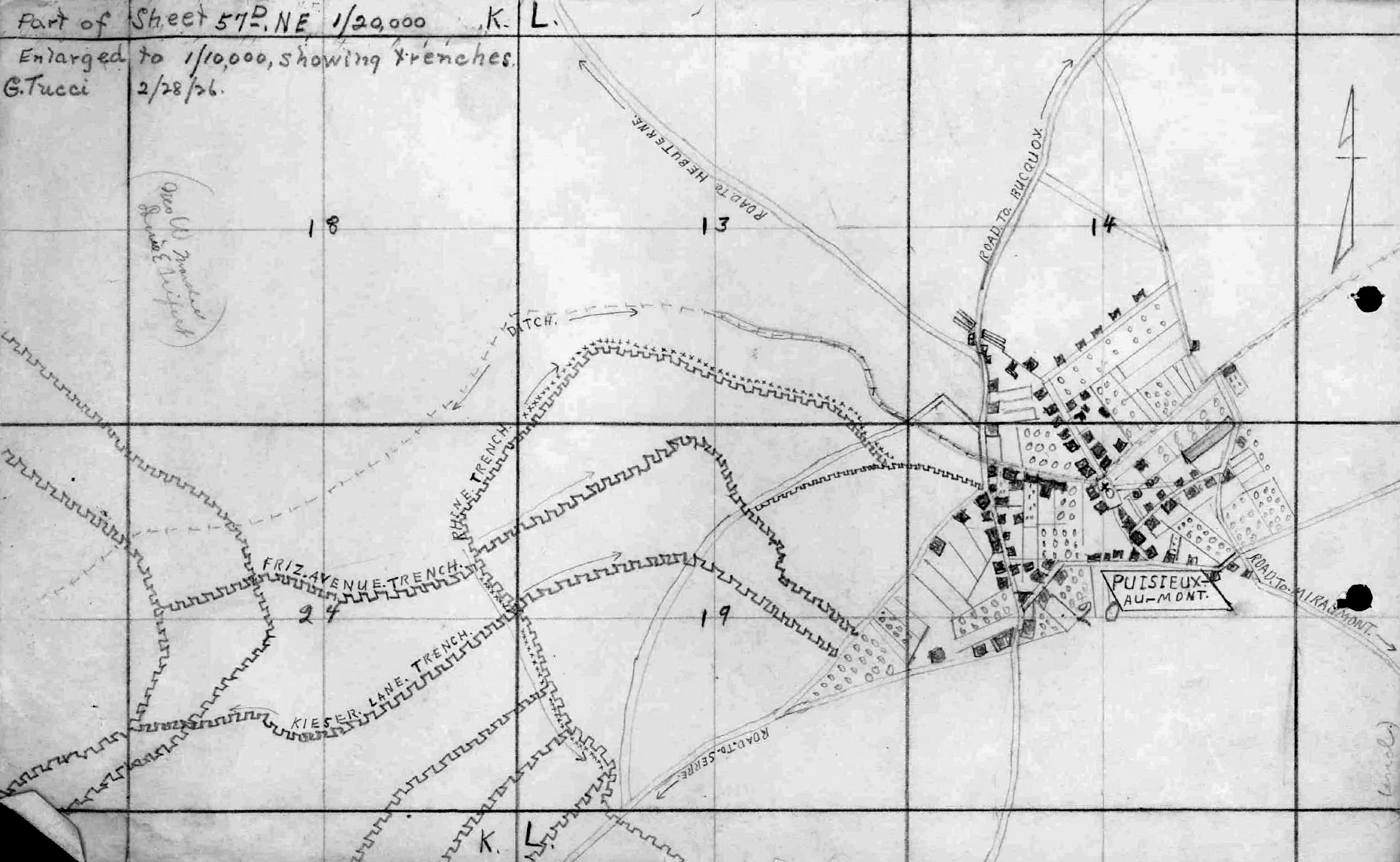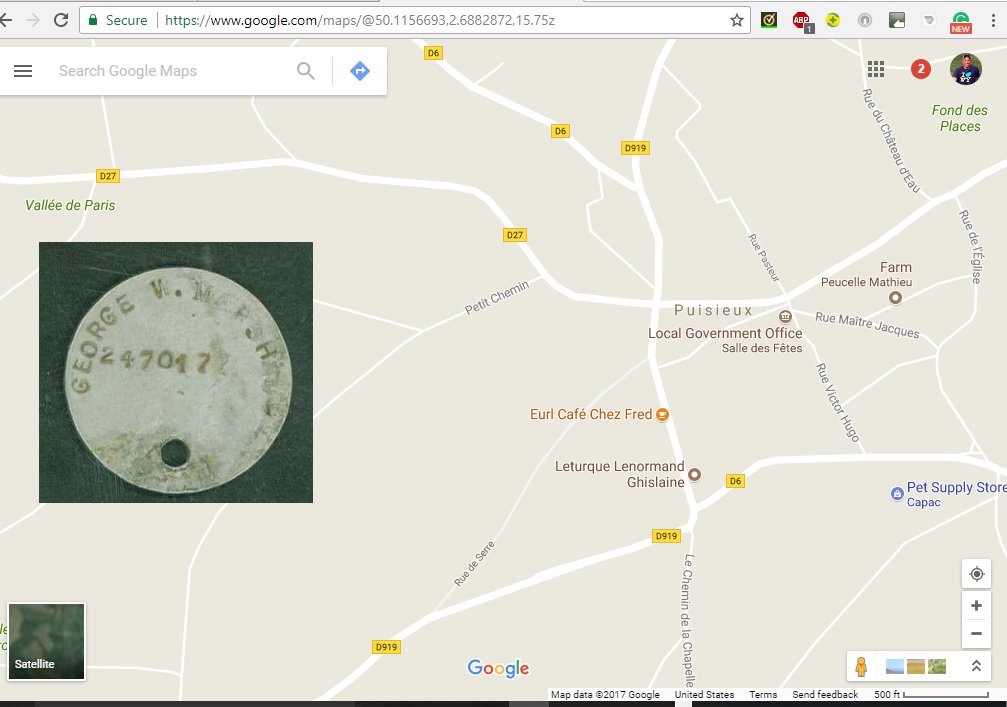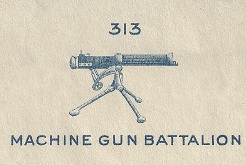Marshall & Siefert
The death of George Marshall and Louis Siefert must have been devastating enough for the families having lost their sons during the war, but imagine the anguish suffered when the remains of these men could not be located for a proper burial. Marshall and Siefert are among the thousands of soldiers counted as Doughboy MIAs.
This map appears in the Burial File for Private Marshall. It was provided to the researchers in 1926 when the Graves Registration Service was attempting to locate the remains of these men.

In Marshall’s file, the map is drawn with the area around Puisieux, France. In Private Siefert’s Burial File, the officer to oversee the burial was Rev. R.S. Watson of the New Zealand Division. There is a burial blank for both men which are very similar and both filled out and signed by the Battalion Chaplain Lt. Thomas Roche. Both burials are recorded as "no tags" buried with the bodies, nor were any tags left to mark the grave in any way. Both files have reports from the effects bureau stating they were holding the tags of both soldiers. Both tags of Private Marshall are actually in his National Archives burial file (see photo). It is unclear why Private Siefert's tags are not in his burial file. A U.S. Chaplain on burial detail would NOT strip the tags from a body. Chaplains were trained burial officers and understood the procedures. Therefore, it can be assumed that Reverend Watson buried Marshall and Seifert. He likely retained the ID tags not knowing any better. Later Chaplain Roche got the details of the burial from Watson and filled out a burial blank as required.
So what happened to the remains? Marshall's file mentions U259 (Unknown 259) disinterred from a British cemetery and reburied at the Somme American cemetery. The 313th MGB was training with the British forces at the time and the units did not intermingle. The 313th MGB wasn't shoved into the British line somewhere amidst the British forces; there would be little reason for a single British body to be found amidst the American sector of the line.
Traditionally, the British never brought their boys home from the battlefield. The world is covered by British soldier's graves. However, the US government had promised the public at the beginning of its first major overseas war that anyone killed “Over There” would be brought home, and for those that did stay in France, our beautiful war cemeteries were created. While the war was going on, nobody on the British side thought much of the dead once they were gone since they never had before. Bury them, say the prayers and get on with things, since no one was ever going to come back to the grave anyway. Once the war was over, then maybe the regiment might do something for them, but that was for later. But later the policy changed, but by then it was too late. And thus Marshall and Siefert got lost in the British shuffle.
Robert Laplander of the Doughboy MIA believes that U259, discovered by the British, buried in one of their cemeteries and disinterred from there was reburied in the Somme American cemetery as one or parts of both of our men from the 313th Machine Gun Battalion. However, without access to the 'U-Files,' there is no possible way to know this for sure, or show which Unknown grave at the Somme U259 corresponds with our soldier.

